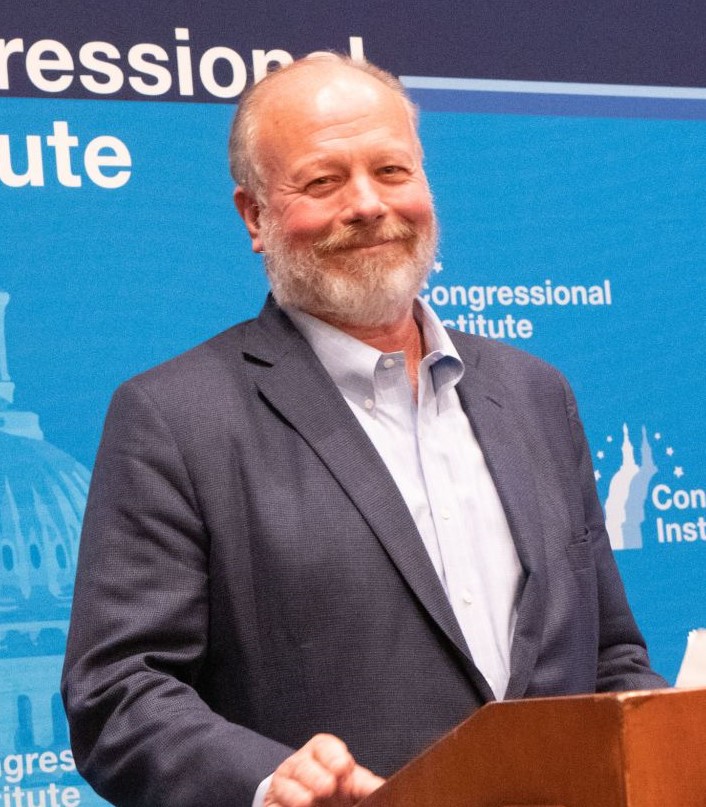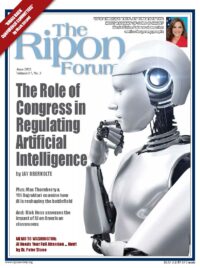
Not that many years ago, one of the grandest spectacles in the legislative process was the Conference Committee. House and Senate Committee chairs would battle over significant points to reach a consensus. Unfortunately, like so many aspects of the legislative process, the Conference Committee has fallen victim to the dramatic shift of congressional power to party leadership. If Congress wants to restore its powers, restarting this traditional way of hammering out compromises would be wise.
Conference Committees are ad hoc committees formed to resolve differences between the House and Senate. The chairs of these temporary committees are usually the chairs of the committees that produced the legislation in question. The remaining members are then appointed by the party leaders in both chambers and ratified by the entire membership.
Once the committees met, a dynamic process would occur, usually behind closed doors. Our book, Surviving Inside Congress, described it as being like the knife fight in Butch Cassidy and the Sundance Kid (“Rules! There are no rules in a knife fight). Staff would resolve slight differences, and the two chairs would determine how to resolve the significant differences.
Like so many aspects of the legislative process, the Conference Committee has fallen victim to the dramatic shift of congressional power to party leadership.
It worked well because the people resolving the differences were the experts in the subject matter of the legislation. Committees are the fundamental way Congress creates a division of labor so that Members can become specialists on specific issues and act as agents for their chamber and party. Conference Committees also allowed chairs to keep the promises they made to Members to gain initial passage. It also allowed them to remove items from the bill as punishment should a Member renege on a commitment to vote for the bill. The net effect was to help build strong and somewhat bipartisan and diverse majorities for legislation. It also had the effect of building relationships based on trust between Members and Committee chairs.
Much of this has changed over the last few decades as party leaders – the Speaker mostly – gathered power and control over the process. Unfortunately, that power shift has come at the expense of Committees. In political science, this is called conditional party government, where Members of Congress agree to back the Speaker, regardless of their own views, in exchange for being protected from tough votes and increased assistance from the party’s campaign apparatus. Both parties have engaged in this practice since the turn of the century.
It turns out that strict party control is barely efficient and rarely effective. Party leadership weakened committees. For instance, after the 1994 Republican takeover of the Congress, Speaker Gingrich cut committee budgets by one-third and imposed term limits on Committee Chairs. As hyper-partisanship increased in the 1990s, bipartisan legislative efforts became more difficult. The narrow majorities of the early 2000s led party leadership to avoid tough votes on authorization and appropriations bills to protect their Members. This led to an abandonment of normal appropriations in favor of unamendable omnibus and “minibus” spending bills that avoided tough floor fights while neutering the authorization committee process that allows for effective Congressional oversight. Today, two-thirds of the non-defense budget is unauthorized, and the appropriations process is combined into one massive trillion-dollar bill that no one reads, and no one can change.
Today’s party leaders have further weakened committees by rarely appointing Conference Committees to resolve House and Senate differences. Instead, the leaders send messages back and forth, offering compromises and solutions to their legislative differences. This process nicknamed “ping-ponging,” sends messages back and forth between chambers, with the Capitol Rotunda being a metaphorical net.
Instead of having the Committee members, the actual subject matter experts, iron out an agreement, the leaders make a deal based on political imperatives. As a result, the Speaker, the Senate Majority Leader, and the President become the only legislators in the process, with the other 533 members of the House and Senate merely being observers who ratify their leader’s agreement.
If Congress wants to restore its powers, restarting this traditional way of hammering out compromises would be wise.
That is different from how Congress is supposed to work. The purpose of a congress is to bring together diverse representatives of the nation to reach compromises everyone can live with.
This is not to say that one party’s political interests never align with the nation’s values, but in the current contest between developing good policy and good politics, politics seems to be winning hands down.
Congress should restore the traditional Conference Committee system. It forces the Administration to deal with policy experts in the committees instead of just the Speaker’s or Senate Leader’s office. It brings more regional and diverse political representation into negotiating policy solutions. It also allows both chambers to build bipartisan majorities as deals are cut to win votes.
Is the Conference Committee always a pretty process? Unfortunately, no. That’s why the Prussian Otto von Bismarck remarked that legislation and sausage closely resembled each other. You did not want to watch either of them being made, but you liked the result once the work was completed.
The key is restoring strength to Committees, ensuring that multiple members of both parties participate in the legislative process. In addition, strong committees increase the power of Congress since the Executive Branch must deal with multiple points of power rather than one or two people in the House and the Senate. Finally, restoring Conference Committees would, most importantly, restore policy expertise on complex legislation.
It makes no sense to ask a committee to spend months developing legislation only to have the party leaders shape the final package. The solution to Congress’ loss of power vis-à-vis the Executive Branch is to open up and restore a robust legislative process where Committees once again act as agents of their chambers rather than merely being the opening act for the actual show between the President, the Speaker, and the Senate Majority Leader.
Mark Strand served as President of the Congressional Institute from 2007 until his retirement earlier this year. He previously spent 24 years as a senior congressional staff member on Capitol Hill.




